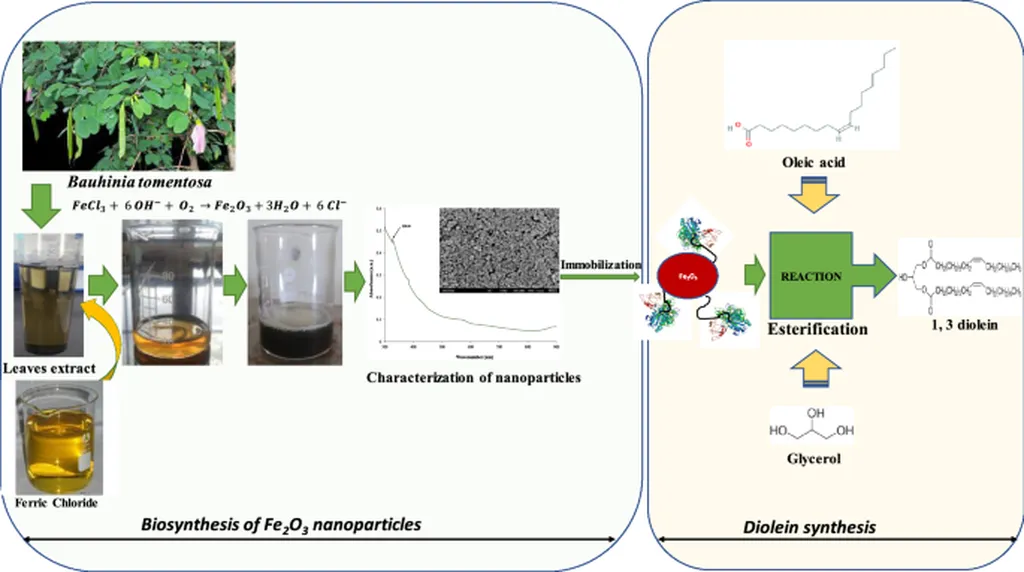In a significant stride towards sustainable nanotechnology, researchers have successfully synthesized iron nanoparticles using quinoa leaf extracts, opening new avenues for environmental remediation and beyond. The study, led by Eliana Mullisaca Contreras, presents a green chemistry approach that enhances biocompatibility and reduces the reliance on harmful chemicals.
The research, published in the journal *Chemical Engineering Transactions* (translated to English as *Transactions on Chemical Engineering*), details the biosynthesis of iron nanoparticles (NpFe) using quinoa leaf extracts. The nanoparticles, ranging from 1 to 100 nm in diameter, were characterized using advanced techniques such as FTIR, X-ray fluorescence, X-ray diffraction, and TEM analysis. The results revealed that the nanoparticles are composed of 74.4% oxygen and 21.1% iron, exhibiting an amorphous structure influenced by the plant matrix.
“The coating of these nanoparticles with OH- groups derived from phenolic compounds significantly enhances their potential applications,” explained Mullisaca Contreras. This coating not only improves their biocompatibility but also expands their utility in various fields, including drug delivery, cancer therapies, and the development of advanced sensors.
One of the most promising applications of these nanoparticles is in environmental remediation. Their ability to enhance nutrient absorption in agriculture and act as remediation agents underscores their versatility. “This sustainable approach not only reduces the use of harmful chemicals but also provides new possibilities in various scientific and technological fields,” added Mullisaca Contreras.
The implications for the energy sector are particularly noteworthy. The nanoparticles’ potential to improve nutrient absorption could revolutionize agricultural practices, leading to more efficient and sustainable farming methods. This, in turn, could enhance crop yields and reduce the environmental impact of agriculture, benefiting the energy sector by providing a more reliable and sustainable source of biomass for bioenergy production.
Furthermore, the nanoparticles’ role in environmental remediation could address critical challenges in the energy sector, such as the cleanup of contaminated sites and the removal of heavy metals from water sources. This could lead to more sustainable and environmentally friendly energy production processes.
The research by Mullisaca Contreras and her team represents a significant advancement in green nanotechnology. By leveraging the power of quinoa leaf extracts, they have developed a sustainable and effective method for synthesizing iron nanoparticles with a wide range of applications. As the world continues to seek sustainable solutions to pressing environmental and energy challenges, this research offers a promising path forward.
The study’s findings highlight the potential of green nanotechnology to drive innovation in various sectors, from agriculture to energy. As researchers continue to explore the applications of these nanoparticles, we can expect to see significant advancements in environmental remediation, agriculture, and beyond. The work of Mullisaca Contreras and her team serves as a testament to the power of sustainable science and its potential to shape the future of technology.

